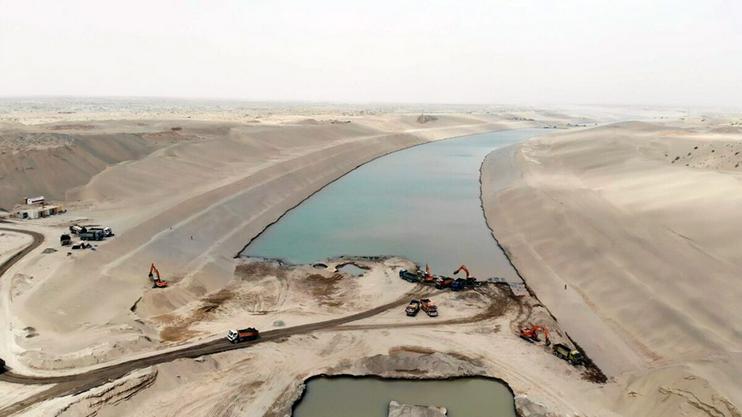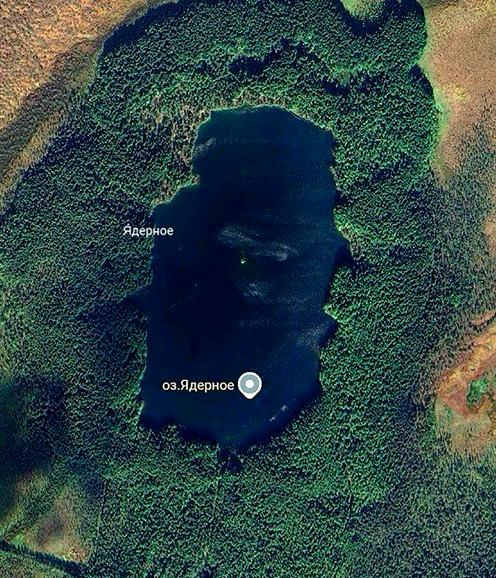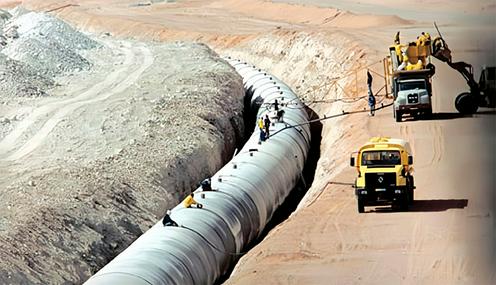The idea of diverting Siberian rivers toward Central Asia is back in the spotlight. On November 14, the Russian Academy of Sciences announced the launch of work on a modern version of the massive water-management project that, in the 1970s and 1980s, was conceived as one of the most ambitious infrastructure initiatives of the Soviet era. Now, with new environmental standards and technical capabilities, the proposal no longer involves building open canals but creating a closed pipeline system capable of transporting large volumes of water from the Ob Lowland to the arid regions of Central Asia — above all Uzbekistan. Given the region’s growing water deficit, which is driving ecosystem degradation and social instability, the project’s relevance may seem self-evident. But how safe is it? After all, it was once abandoned largely due to unpredictable environmental consequences.
A Dream of a Sea
The idea of redirecting the waters of northern and Siberian rivers into the arid regions of Central Asia took shape over nearly a century and a half. It is closely linked to the name of Yakov Demchenko — a graduate of Kyiv University who, in 1868, was the first to articulate the concept of large-scale diversion of the flows of the Ob and Irtysh into the Aral Sea basin. Demchenko wrote:
“Flooding the Aral–Caspian lowland would have an enormous impact on relations between the neighboring countries of Europe and Asia, creating between them a new Mediterranean Sea with an area of 22 to 24,000 square miles, connected to the existing Mediterranean via the Manych [a river in Kalmykia and Stavropol, the remnant of a strait between the Caspian and Azov seas]… The new sea, significantly increasing irrigation in the countries around it (especially to the south), raising their average annual temperature and even more so their winter temperatures, would immeasurably enhance their economic importance.”
On the state level, discussions of diverting rivers emerged only in the Soviet era. In 1948, the academic Vladimir Obruchev approached Joseph Stalin with a proposal to implement the project, but the Soviet leader showed little interest—especially since other large-scale initiatives were already in development at the time, including the construction of the Main Turkmen Canal (from the Amu Darya to the Caspian Sea) and the Volga–Ural Canal.
In the 1950s, the idea of reversing river flows was further developed by the Kazakh academic Shafik Chokin, and by the 1960s the growing irrigation needs of Kazakhstan and Uzbekistan made the project a subject of nationwide scientific meetings in Tashkent, Almaty, Moscow, and Novosibirsk. In 1968, the Central Committee of the Communist Party instructed Gosplan and the Academy of Sciences to develop the technical details for a canal linking Siberia to Central Asia, and a Soviet government decree—No. 612 of May 24, 1970—officially designated the diversion of up to 25 cubic kilometers of water annually by 1985 as a priority task.
Practical implementation soon followed. In 1968, the Irtysh–Karaganda Canal went into operation, supplying central Kazakhstan with water for industrial and agricultural needs, and in 1976 the 25th Party Congress formally authorized the launch of work on what came to be known as the “project of the century,” appointing Soyuzgiprovodkhoz as its lead design institution. Between 1976 and 1986, scientific and project teams from the USSR Academy of Sciences, Gosplan, and the Ministry of Water Resources produced 50 volumes of project documentation and 10 map atlases, bringing more than 160 organizations and research institutes into the effort.
The preliminary parameters of the project were striking: the main canal was to stretch 2,550 kilometers, reach up to 300 meters in width, and run 15 meters deep, with a planned capacity of 1,150 cubic meters per second. Its estimated cost was 32.8 billion Soviet rubles (about $4.5 billion in today’s terms), with an expected annual return of up to 16 percent.
In 1986, for a number of reasons—chiefly economic—the Politburo of the Communist Party voted to shut the project down. The growing environmental movement also played a role, as did vigorous criticism from the scientific community, which saw the diversion of Siberian rivers as a threat to the hydrological balance of the region and warned of the unpredictability of its consequences. As a result, five divisions of the USSR Academy of Sciences submitted expert opinions to the Central Committee and the Council of Ministers highlighting major design flaws and extreme risks to the environment. Some political figures also opposed the project, among them the chairman of the Council of Ministers, Alexei Kosygin, who believed the environmental damage would be irreparable.
After the collapse of the USSR, the idea of diverting water reappeared in the news more than once. In 2002, Moscow’s mayor Yuri Luzhkov—a devotee of grandiose construction—called for reviving the plan, and in 2010 it was discussed publicly by the presidents of Russia and Kazakhstan. Speaking at the St. Petersburg International Economic Forum, Nursultan Nazarbayev remarked:
“Such strategic projects bring our countries significantly closer together; we are fully capable of meeting such large-scale integration challenges.”
However, environmental assessments remained cautious. Among the potential risks cited by experts—both then and now—were the flooding of farmland and forests, rising groundwater levels, the loss of valuable fish species, disruptions to the traditional life of Indigenous peoples of the North, and changes to permafrost patterns and the hydrological balance across vast territories east of the Urals.
Water as Luxury
While debates over river diversion smoldered on without moving beyond the realm of theoretical speculation, Central Asia’s water crisis slowly ceased to be an abstraction and began taking on increasingly concrete forms amid global climate change. The glaciers of the Tien Shan and Pamir mountains—feeding the region’s two main arteries, the Amu Darya and the Syr Darya—have shrunk by more than a quarter in recent decades, even as water consumption has surged alongside rapid population growth and industrial expansion.
Today, the former Soviet republics of Central Asia are home to roughly 80 million people—nearly one and a half times more than 30 years ago—with an annual growth rate estimated at 1.5 to 2 percent. Industry and agriculture are expanding rapidly, placing enormous pressure on water supplies. Experts predict that by 2050 the population of the region (excluding Afghanistan) will surpass 100 million, while water shortages—absent drastic action—will reach critical levels. In recent years, the flow of several rivers in Kazakhstan and Uzbekistan has declined by 40 to 70 percent, and the water in their lower reaches has become so mineralized that it is no longer suitable for drinking or irrigation.
As a result, 13 percent of the region’s population already lacks access to safe drinking water. Meanwhile, decisive measures remain elusive: Central Asian countries continue to rank among the world leaders in per capita water consumption. Governments could significantly reduce this figure, as an estimated 35 billion cubic meters of water—nearly half of what is used for irrigation—are lost every year in inefficient irrigation systems. For comparison, this is roughly equal to the useful volume of the Kuybyshev Reservoir, the largest in Russia.
Experts, for their part, strongly recommend the broad adoption of water-saving technologies such as drip and sprinkler irrigation, laser leveling of fields, and automated water-use monitoring. Uzbekistan and Kazakhstan have already begun work in this direction, but the scale remains modest, and the measures taken so far have had no meaningful effect on the region’s overall water balance. Central Asian countries have also failed to reach a common position on water management—lingering disagreements and the absence of a unified strategy threaten the stability of water supplies and inflame political tensions. As a result, a war for fresh water is shifting from dystopian scenario to tangible possibility.
A separate challenge for the former Soviet republics comes from construction projects launched by the Afghan Taliban*, aimed at redirecting water from rivers that feed Central Asia. The most ambitious of these is the Kosh-Tepa (Kushtepa) Canal, which diverts part of the Amu Darya’s flow to irrigate land in northern Afghanistan. The new canal is planned to stretch 285 kilometers, with a width of 100 meters and a depth of 8.5 meters. Designed to withdraw up to 10 cubic kilometers of water annually, it would take nearly one-third of the river’s total flow—half of which downstream already goes into the Karakum Canal, whose drainage system is hopelessly outdated.
At the November 16 Consultative Meeting of the Presidents of Central Asian States in Tashkent, Uzbekistan’s President Shavkat Mirziyoyev called for “actively involving neighboring Afghanistan in regional dialogue” on the shared use of Amu Darya resources. So far, however, the Taliban have shown no interest in coordinating their actions with neighboring countries.
Concerns also surround the poor quality of construction in Afghanistan. As media reported, in 2023 the first completed section of the Kosh-Tepa Canal cracked, creating an artificial lake comparable in size to the Charvak Reservoir outside Tashkent. Afghan officials have responded to all complaints by saying that Afghanistan has made no commitments to other countries and will manage water on its territory as it sees fit.
At the same meeting in Tashkent, Mirziyoyev proposed declaring 2026–2036 “a decade of practical action for the rational use of water in Central Asia.” What exactly this initiative would entail is not yet clear. But it is unlikely that, in speaking of “practical action,” the Uzbek president was referring to reviving the “Siberian river reversal” project, given its scale and the complexities associated with it.
Some $100 Billion
Announcing the revival of the river-diversion project, Viktor Danilov-Danilyan, scientific director of the Institute of Water Problems, told RBC that the decision had actually been made back in October at a meeting of the Scientific Council of the RAS Department of Earth Sciences. At that meeting, possible technical parameters for a future pipeline were outlined — a length of 2,100 kilometers and an annual capacity of 5.5 cubic kilometers. Other figures were mentioned as well: 20 and even 70 cubic kilometers, which would amount to half of the total runoff of all Central Asian rivers (the combined annual runoff of the major Siberian rivers is estimated at 3,000 cubic kilometers). The investment required for construction was estimated at $100 billion, with the first phase potentially entering operation in ten years.
According to Danilov-Danilyan, the Russian Academy of Sciences will propose that the Ministry of Education and Science include funding for research in this area in the state plan. When that might happen is unclear, but in the scientist’s view, building a water pipeline to Central Asia “does not require urgent implementation”—a claim that is certainly open to debate.
In addition to a pipeline from Siberia to Uzbekistan, the RAS meeting also discussed another idea: diverting water from Russia’s northern rivers, the Pechora and the Northern Dvina, into the Volga basin. This grand plan, known as Project Taiga, also dates back to Soviet times. In the early 1970s it even moved toward implementation, when three nuclear charges were detonated in the northern part of Perm Krai, between the Pechora and the Kolva (a tributary of the Kama). The craters from the blasts were intended to form the foundation of a future canal that would redirect northern waters toward the shrinking Caspian Sea. The project was abandoned, but the lake created in the taiga by the explosions — Lake Yadernoe — still emits radiation.
Initial reactions to Danilov-Danilyan’s statement were predictably skeptical. For example, Mikhail Bolgov, a professor in the Department of Ecology and Integrated Water Resources Management at RUDN University, believes the river-diversion project is unlikely to move forward anytime soon because of its financial dimension:
“I don’t think the idea will go anywhere in the near future, because there are no investors for the project. We can do the technical calculations, and whoever needs it can invest. We can even build it, but who will pay, and what the consequences will be — economic, environmental, and so on. Everything remains at the level of 1986.”
According to Bolgov, the archives containing Soviet-era calculations have been lost, meaning the entire design process would have to start from scratch. At the same time, the expert does not rule out that if scientists conclude the project is “economically viable” and “environmentally neutral,” it could be revisited.
On his part, Vladimir Kirillov, head of the Laboratory of Aquatic Ecology at the Institute for Water and Environmental Problems of the Siberian Branch of the Russian Academy of Sciences, doubts the project is realistic for political reasons:
“At present this is impossible for political reasons. I’m a realist and I know for certain that, as of today, the countries connected to this region will not come to an agreement… Of course, it would be good if the countries of Central Asia and Russia jointly conducted a detailed study of the Ob River’s flow and the potential for using part of it in such projects. But my forecast for now is simple — this project will not be implemented.”
Still, Kirillov says that from a scientific standpoint it would be useful to analyze whether the project makes sense and, based on those findings, develop some local solutions for Central Asia — perhaps not across the entire Ob basin, but in certain parts of it. However, the scenario of “we’ll now take part of the Ob’s flow and divert it” is unrealistic both in terms of ecological feasibility and political irresolvability, the scientist told RIA Novosti.
Experts within Central Asia itself have also been cautious in their assessments. Bakhtiyor Ergashev, director of the Ma’no Center for Research Initiatives (Uzbekistan), argues that the region should first focus on conserving water, for example by shifting to less water-intensive crops:
“There’s no need to invent anything — we just need to start saving water. Then there will be no need to bargain with Russia over diverting Siberian rivers, nor to raise an outcry over Afghanistan’s policies.”
Has Anyone Ever Managed It?
Of course, in today’s post-Soviet realities, constructing a 2,000-kilometer pipeline with a capacity comparable to the annual flow of the Moskva or Ural Rivers (in their current conditions) seems sheer pipe-dreaming — especially given Russia’s political turbulence and financial difficulties.
Yet theoretically, such a construction is possible, as global experience shows. A frequently cited example of a comparably large-scale project is the Great Man-Made River (GMR) in Libya — a network of aqueducts built during Muammar Gaddafi’s rule. Once operational, the system of pipelines and aqueducts, with a total length exceeding 2,800 kilometers, delivered about 2 cubic kilometers of freshwater annually to Libya’s largest coastal cities (Tripoli, Benghazi, Ajdabiya), sourced from aquifers across the country, including the most arid desert areas.
Construction of this “river” began in 1984 and was largely completed thirty years later, although expansion and modernization of certain sections continued up to the 2010s — right until the last days of Libya’s dictator. The construction cost was estimated at $25 billion, entirely covered by Gaddafi’s government without resorting to external loans.
Yet even the achievements of the Libyan Jamahiriya pale compared to projects currently underway in Iran and China. In the Shiite-led Iranian state, the first line of a pipeline network, designed to transport desalinated water from the Persian Gulf to the country’s arid central and eastern regions, has already been built and launched. The project’s cost is estimated at $30 billion, with completion expected by 2030. The total planned length of the artificial waterways is 3,700 kilometers.
In China, an even more ambitious project has been underway since 2002, attributed to the “Great Helmsman” himself. It involves the construction of three channels, each approximately 1,300 kilometers long, to transport water from the Yangtze River to northern regions at an annual volume of up to 15 cubic kilometers. The project is scheduled for completion by 2030, with construction costs potentially reaching a staggering $500 billion.
However, human imagination has always exceeded human capabilities, and there are several hydraulic engineering projects that, in terms of scale, surpass even the diversion of Siberian rivers and, probably for the same reason, were never realized. One of them is the project to flood the Qattara Depression in the Egyptian desert. This enormous lowland — about 20,000 square kilometers in area and up to 130 meters below sea level — captured the attention of engineers from the late 19th century onward. It was proposed to turn the depression into an inland sea by constructing a canal from the Mediterranean. Its waters would not only have transformed the interior regions of the Sahara into a flourishing oasis but also driven turbines of a giant power station. An alternative plan involved laying a 320-kilometer pipeline from the Nile to the depression.
In the 1950s–1960s, even the CIA became involved in the idea. Analysts believed that flooding the depression could bring peace and harmony to the Middle East. However, constructing the canal or tunnel would have also involved using nuclear explosions. Ultimately, the project was abandoned due to the extremely complex geology, landmines left in Egypt from World War II, and the potential for radioactive contamination. Instead of flooding the Qattara Depression, authorities in Cairo pursued the “New Valley” project, linking Lake Nasser on the Nile with the Toshka lakes in the southwest of the country. This allowed for the expansion of arable land and the development of new agricultural production in the Sahara sands.
*The organization is recognized as a terrorist group and banned in several countries.
-
 11 November11.11To Live Despite All HardshipUzbek filmmaker Rashid Malikov on his new film, a medieval threat, and the wages of filmmakers
11 November11.11To Live Despite All HardshipUzbek filmmaker Rashid Malikov on his new film, a medieval threat, and the wages of filmmakers -
 22 October22.10Older Than the Eternal CityWhat has Samarkand accomplished in its three thousand years of existence?
22 October22.10Older Than the Eternal CityWhat has Samarkand accomplished in its three thousand years of existence? -
 16 October16.10Digital Oversight and Targeted RecruitmentRussia Approves New Migration Policy for 2026–2030
16 October16.10Digital Oversight and Targeted RecruitmentRussia Approves New Migration Policy for 2026–2030 -
 15 October15.10A Step Back into the Middle AgesWhy Kyrgyzstan Should Not Reinstate the Death Penalty
15 October15.10A Step Back into the Middle AgesWhy Kyrgyzstan Should Not Reinstate the Death Penalty -
 30 September30.09When Sea Becomes Fact of the PastWhy Tokayev Is Concerned About the Health of the World’s Largest Enclosed Body of Water
30 September30.09When Sea Becomes Fact of the PastWhy Tokayev Is Concerned About the Health of the World’s Largest Enclosed Body of Water -
 26 September26.09PhotoA Close-Up of the BazaarPhoto Tour of the Fergana Valley with Anzor Bukharsky
26 September26.09PhotoA Close-Up of the BazaarPhoto Tour of the Fergana Valley with Anzor Bukharsky







